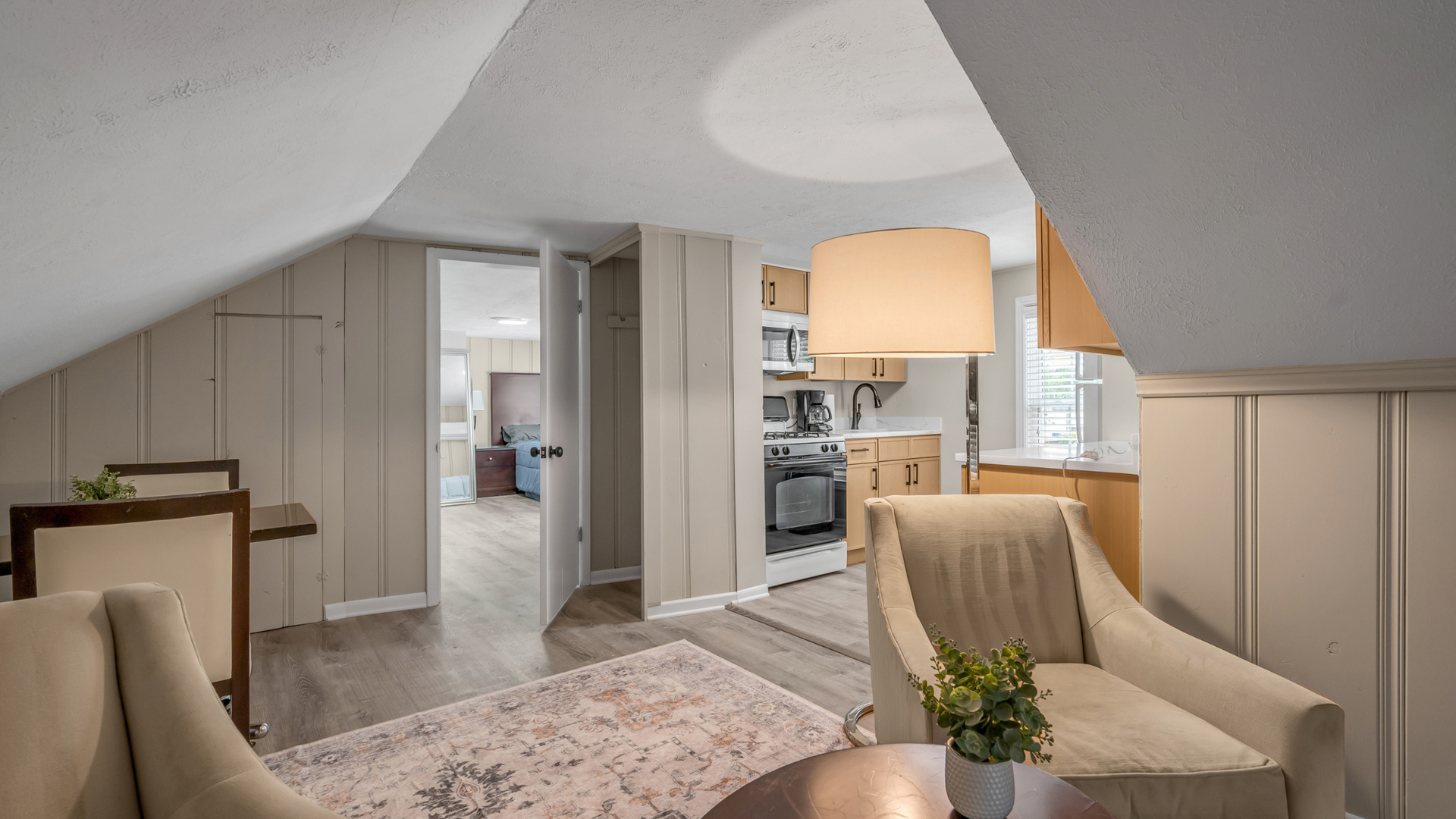Why Shared Hotel Rooms Don’t Save Money (They Cost You)
On paper, putting two journeymen in one hotel room cuts your lodging line item in half. In the real world, it quietly cuts into sleep, safety, focus, and retention, and those are the costs that bleed a project. This article unpacks why shared hotel rooms do not save money for U.S. construction teams, how the hidden costs show up in your schedule and P&L, and what to do instead.
The sleep and safety math you cannot ignore
A shared room is an engineered sleep problem. Two adults with different sleep and bathroom routines, alarms, shift times, and phone habits in a single box means interrupted sleep for at least one of them most nights. The evidence on noise and sleep is decisive: individual‑level noise exposure is associated with significantly shorter sleep duration, and perceived nighttime noise degrades sleep quality on validated instruments like the PSQI. Even among couples, reports show worse sleep when sharing a bed, which underscores how sharing tight spaces amplifies disturbances. In short, if partners who love each other struggle to sleep together, coworkers with clashing routines fare worse. Poor sleep then drives daytime sleepiness and irritability that shows up on site.
Fatigue is not just “being tired.”
OSHA flags that accident and injury rates are 18% greater on evening shifts and 30% greater on nights, and 12‑hour days elevate injury risk by 37%. National safety and occupational health sources tie fatigue to costly productivity losses and more incidents; the
Sleep Foundation and
National Safety Council estimate employer losses from fatigue‑related productivity hits at roughly $136 billion annually, and fatigue contributes to a measurable share of workplace injuries. That is not theoretical for construction, where heavy equipment, heights, and traffic control leave little margin for error. Shared rooms stack the deck toward poor sleep; poor sleep raises risk; risk turns into schedule slips, medical bills, and rework.
Policy, liability, and duty of care: why single occupancy is the standard
If you think single‑occupancy travel is “gold‑plated,” check formal policies. Public‑sector and association travel rules routinely reimburse the single‑occupancy rate, and they explicitly do not expect travelers to share rooms. Two clear examples from the last 12 months:
the Council of State and Territorial Epidemiologists’ 2024 travel policy states it “does not expect” sponsored travelers to share lodging, and
the State Bar of California’s 2025 expense policy reimburses a “standard single‑accommodation hotel room.” These are not luxury perks; they are risk‑aware norms.
There is also liability.
The EEOC’s 2024 harassment guidance reiterates employer responsibility for preventing harassment and creating safe conditions. Forcing coworkers to share bedrooms and bathrooms increases the chance of complaints, conflicts, and claims. HR industry publications have been blunt: pairing coworkers in one room is widely flagged as a recipe for trouble that negates any “savings.” Meanwhile, hotels can and do enforce occupancy limits and extra‑adult fees, which erode theoretical savings and complicate compliance. In 2025, corporate travel leaders also emphasize duty of care and risk management as non‑negotiables in travel policy. When you add those realities together, single‑occupancy becomes the conservative choice, not the extravagant one.
What the field says: crews, managers, and the public backlash
If construction crew lodging policies ignore worker sentiment, attrition will correct the mistake for you. Recent threads in worker and HR communities show how employees respond when asked to share. In
r/AskHR, HR practitioners say there may be no explicit law against room sharing, but the practice carries “so much risk” that most employers abandoned it years ago. In
r/work, employees describe anxiety, overstimulation, and flat refusal when told they must bunk with coworkers. These are not outliers; they reflect a broader cultural expectation: adults on work travel should not be required to share bedrooms and bathrooms with colleagues.
Construction‑adjacent threads tell the same story. Electricians note that room sharing might happen by choice for a short stint with a known colleague, but anything longer is a fast path to burnout or quitting. New hires question whether months‑long projects that require sharing are normal, while industry‑specific subreddits for construction managers swap tips precisely to avoid these issues by rethinking vendor relationships. Even outside construction, a 2024 workplace thread about a mandatory offsite with shared bedrooms drew heavy criticism and risk warnings. Is Reddit a policy manual? No. But it is where reputational damage and talent flight start, and it mirrors how your candidates and crew leaders judge your job postings and field assignments.
The smarter path: construction crew lodging that actually lowers total cost
Here is the uncomfortable truth: a shared hotel room may cut the lodging invoice, but the total cost of that choice rises elsewhere. Hotels routinely charge extra‑adult fees beyond double occupancy and enforce max occupancy per fire code, so “two per room” is not always a clean 50 percent savings. More importantly, the cost of fatigue is quantifiable. A simple illustration: two technicians at $45 per hour lose just one hour of effective productivity per day for 20 workdays due to poor sleep, shower queues, and disrupted rest. That is 40 labor‑hours, or $1,800, before you factor overtime premiums, rework, or injury risk. If a single near‑miss becomes an incident, your workers’ comp and schedule impact dwarf any hotel savings. Duty‑of‑care obligations and policy updates across 2025 reinforce that employers must prioritize safe, restorative accommodations.
A better approach is to match housing type to project duration and crew structure. For under a week, standard hotels can work. For 1 to 8 weeks, extended‑stay hotels may deliver good value. For multi‑month assignments and larger teams, furnished homes or corporate housing with private bedrooms almost always produce lower total cost when you include meals, laundry, commute proximity, and morale. Consumer guidance from early 2025 notes that rentals tend to become more affordable beyond the 6‑month mark, while travel industry research shows extended‑stay formats may be cost‑effective for shorter long stays. What matters for construction crew lodging is not a single nightly rate but whether your people can rest, cook, and reset without sharing beds or bathrooms. That is what keeps productivity and retention intact.
At Hard Hat Housing, we exist to avoid these traps entirely. We source home‑like, turnkey crew housing close to the jobsite with private rooms, full kitchens, laundry, Wi‑Fi, and flexible terms, and we package everything into an all‑inclusive price. Many teams see 25 to 35% savings compared to traditional hotels while improving crew rest and morale. Because our model centers on single‑occupancy private bedrooms, you get the on‑site performance of a well‑rested crew without the HR and liability headaches of shared rooms. That is what construction crew lodging should deliver: real savings without invisible costs.
Shared hotel rooms look like savings until you measure what they actually do to sleep, safety, morale, and compliance. The data on fatigue and incidents is not ambiguous. The policy landscape is moving hard toward single occupancy, and worker sentiment is even further ahead. If you want predictable schedules, fewer safety events, and higher retention, stop forcing adults to share bedrooms on the road. Invest in construction crew lodging that gives every professional a private room, a quiet night, and a fair shot at doing their best work the next day.
Ready to see what single‑occupancy, near‑site housing would cost for your next project, and how much it could save you in productivity and retention? Contact Hard Hat Housing for a no‑pressure cost comparison and quick availability check.













